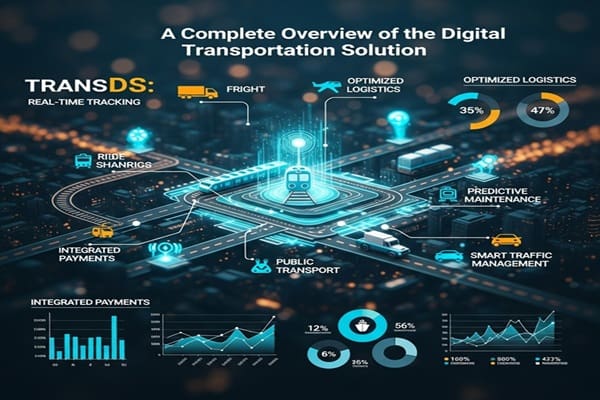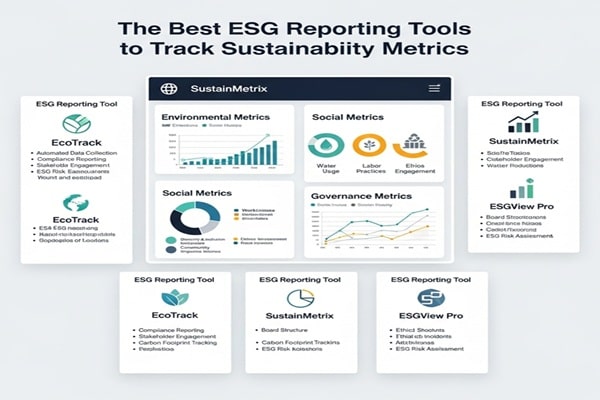If you’ve ever dealt with late deliveries, confusing logistics schedules, or endless driver calls, you already know how stressful transportation management can get. The good news? Digital tools are finally catching up, and one platform making waves in this space is TransDS.
Whether you run a delivery fleet, manage e-commerce shipments, or oversee public transport, TransDS is designed to make your life easier. It’s not just another tracking tool—it’s a full transportation digital solution that helps you plan smarter, save money, and keep your customers happy.
In this guide, we’ll break down everything you need to know about TransDS—what it is, how it works, its best features, and why so many industries are adopting it. Think of this as your go-to roadmap for understanding how TransDS can transform the way you move goods and people.
What Exactly Is TransDS?
At its core, TransDS (Transportation Digital Solution) is a digital platform that brings together all the moving parts of logistics and transportation into one dashboard.
Instead of juggling multiple apps or spreadsheets, you get a centralized hub to track vehicles, optimize routes, automate dispatch, and analyze performance.
Here’s what that looks like in practice:
-
Real-time tracking of vehicles and cargo
-
Route optimization that cuts down fuel costs and delays
-
Automated scheduling and dispatch for fewer human errors
-
Performance analytics so you can see what’s working (and what’s not)
-
Integration with other tools like ERP or CRM systems
In short, TransDS helps businesses go digital, stay efficient, and scale with confidence.
How Does TransDS Work?
Think of TransDS as the “control tower” of your transportation network. Everything is connected—vehicles, drivers, managers, and customers.
Here’s a simple breakdown of how it works:
-
Data Input – Orders, driver details, and vehicle info are entered.
-
System Analysis – AI tools crunch the numbers to suggest the best routes and schedules.
-
Task Allocation – The system automatically dispatches tasks to drivers via their mobile apps.
-
Live Monitoring – Managers can track every movement in real time.
-
Feedback Loop – After deliveries, the system logs performance data, customer feedback, and delivery confirmation.
The result? Fewer headaches, more transparency, and smoother operations.
Key Features That Make TransDS Stand Out
Let’s dig into the most powerful tools you’ll find in a typical TransDS platform.
1. Real-Time Vehicle and Cargo Tracking
No more guessing games. GPS and IoT sensors let you see exactly where your vehicles and shipments are—at all times.
2. Route Optimization
TransDS analyzes traffic, schedules, and fuel efficiency to map out the fastest, cheapest routes. That means less time on the road and lower costs.
3. Automated Dispatching
Instead of manually assigning drivers, the system does it for you based on who’s available, nearby, or best suited for the job.
4. Data Analytics & Reports
From delivery times to fuel consumption, you get detailed reports that show how well your fleet is performing.
5. Fleet & Maintenance Management
Keep vehicles in top shape with automatic maintenance reminders and driver log monitoring.
Who Benefits Most from TransDS?
TransDS isn’t just for big logistics companies—it works across multiple industries. Here are a few real-world use cases:
-
Logistics & Freight – Streamline cross-country transport and manage multiple warehouses.
-
E-commerce & Retail – Improve last-mile delivery and keep customers updated with accurate ETAs.
-
Public Transportation – Track buses, manage schedules, and reduce delays.
-
Healthcare & Pharma – Safely move temperature-sensitive goods like vaccines with IoT monitoring.
-
Food Delivery & Couriers – Coordinate multiple drivers while ensuring fast, reliable deliveries.
The Biggest Advantages of Using TransDS
So why are companies adopting TransDS at such a rapid pace? Here are the top benefits:
-
Higher Efficiency – Automating dispatch and routing reduces wasted time.
-
Lower Costs – Route optimization and fleet monitoring cut down fuel and repair expenses.
-
Better Customer Experience – Customers love real-time tracking and accurate delivery times.
-
Scalability – Handle more vehicles and deliveries without hiring extra staff.
-
Easy Integrations – Syncs with CRM, ERP, and warehouse systems for smooth workflows.
Things to Consider Before Adopting TransDS
Of course, no digital tool is perfect. Here are a few challenges you might face when implementing TransDS:
-
Initial Setup Costs – While cloud-based options are cheaper, there’s still an upfront investment.
-
Training Needs – Staff and drivers will need to get comfortable with the new system.
-
Data Security – Since sensitive business data is involved, strong cybersecurity is a must.
-
Possible Downtime – Like any cloud system, occasional outages may happen.
The good news? Most of these challenges can be managed with proper planning and support.
Also Read : Tiwzozmix458: Exploring the Mystery Behind the Digital Name
Popular TransDS Solutions You Should Know
Depending on your business needs, you can choose from several well-known TransDS providers:
-
Transporeon – Specializes in freight automation and visibility.
-
Fleet Complete – Great for GPS tracking and fleet management.
-
Project44 – Focused on real-time visibility for shippers and carriers.
-
SAP Transportation Management – Part of SAP’s full logistics suite.
-
Geotab – Known for telematics and vehicle monitoring.
Some companies even build custom TransDS platforms tailored to their exact needs.
The Role of AI and IoT in TransDS
One of the coolest parts about modern TransDS systems is their use of AI and IoT.
-
AI Features: Predictive maintenance alerts, smart rerouting during traffic jams, and delivery time predictions.
-
IoT Features: Sensors that monitor vehicle health, track cargo conditions (like temperature), and trigger alerts for unexpected events.
Together, these technologies make TransDS smarter, faster, and more reliable.
What’s Next for TransDS?
The transportation industry is evolving quickly, and TransDS will continue to grow with it. Here are a few exciting trends to watch:
-
Cloud Expansion – More businesses will choose SaaS-based solutions for flexibility.
-
Autonomous Vehicles – Expect TransDS to integrate with self-driving trucks and delivery bots.
-
AI Forecasting – Smarter analytics for predicting demand, optimizing resources, and planning ahead.
-
Blockchain Integration – For secure, transparent cargo tracking and documentation.
The future looks bright—and digital.
Final Thoughts
If your business depends on moving goods or managing fleets, TransDS can be a real game-changer. From reducing costs to improving customer satisfaction, it gives you the tools to run transportation smarter, not harder.
Instead of scrambling with phone calls and guesswork, you’ll have a bird’s-eye view of your entire operation—all in one platform.




